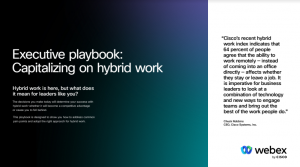Ecosystem banking is a new concept that aims to create a market for the conservation and restoration of natural resources. It is a type of banking that focuses on the value of ecosystem services and creates incentives for landowners to protect and restore natural habitats.
The idea behind ecosystem banking is that landowners can earn credits for the ecosystem services their land provides. These credits can then be sold to companies and individuals who need to offset their environmental impact or meet regulatory requirements. In essence, ecosystem banking is a market-based approach to conservation and restoration.
The concept of ecosystem banking has gained traction in recent years as more companies and governments look for ways to reduce their environmental impact.
Here are some of the key benefits of ecosystem banking:
- Provides Incentives for Conservation and Restoration: Ecosystem banking creates financial incentives for landowners to protect and restore natural habitats. This incentivizes conservation and restoration efforts, which can lead to healthier ecosystems and increased biodiversity.
- Increases Private Investment in Conservation: Ecosystem banking allows private investors to invest in conservation efforts. This can help increase the amount of funding available for conservation projects, which can be particularly important in areas where government funding is limited.
- Helps Meet Regulatory Requirements: Companies and individuals can use ecosystem credits to offset their environmental impact or meet regulatory requirements. This can be particularly important in industries that have a high environmental impact, such as mining or oil and gas.
- Supports Local Communities: Ecosystem banking can support local communities by providing financial incentives for landowners to protect and restore natural habitats. This helps to create jobs and also support local economies.
- Enhances Environmental Stewardship: Ecosystem banking encourages environmental stewardship by creating financial incentives for landowners to protect and restore natural habitats. This can help promote a culture of environmental responsibility and sustainability.
Developing an ecosystem banking system requires collaboration between stakeholders such as landowners, investors, regulators, and environmental organizations. Here are the key steps to developing an ecosystem banking system:
- Identify the Ecosystem Services: The first step in developing an ecosystem banking system is to identify the ecosystem services that are provided by the natural habitats in the area. This can include things like water quality, carbon sequestration, and biodiversity.
- Determine the Credit System: Once the ecosystem services have been identified, a credit system needs to be developed. This involves determining how credits will be awarded and how they can be traded on the market.
- Set the Regulatory Framework: The regulatory framework for ecosystem banking needs to be established to ensure that credits are accurately awarded and traded. This can include things like certification and auditing systems.
- Identify Stakeholders: Stakeholders such as landowners, investors, regulators, and environmental organizations need to be identified and brought together to develop the ecosystem banking system.
- Develop the Market: The final step is to develop the market for ecosystem credits. This involves creating a system for buying and selling credits and promoting the benefits of ecosystem banking to potential buyers.
In conclusion, ecosystem banking is a market-based approach to conservation and restoration that provides financial incentives for landowners to protect and restore natural habitats. It can provide benefits such as increased private investment in conservation, meeting regulatory requirements, and supporting local communities.
More Stories
Volt secures $3M seed funding to enhance next gen SMS cost reduction
Software companies can achieve cost and time savings by utilising a category-defining developer suite, which streamlines and optimises SMS programmes...
Fairgen secures $8M in funding to develop AI generated survey responses
The company's mathematical research advancements have facilitated the development of forecast synthetic responses with established accuracy. This discovery possesses the...
MINT boosts U.S. expansion through strategic appointments and new partnerships
Global enterprise software solutions remain the primary catalyst for growth and development in the United States. These solutions effectively enhance...
How to select robo-advisors to prepare for retirement?
Increasing numbers of people are turning to robot-advisors to plan for their retirement as a result of the technological advancements...
What is Wealthtech as a service?
Over the past few decades, the world of finance has undergone significant transformations, with technology playing a crucial role in...
What is Big Data and what is its contribution to digital marketing?
In the current digital era, "big data" has become a prominent buzzword. But what does it precisely mean? Big data...

